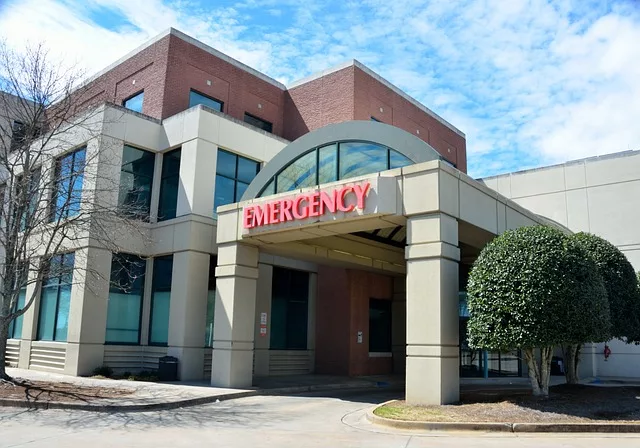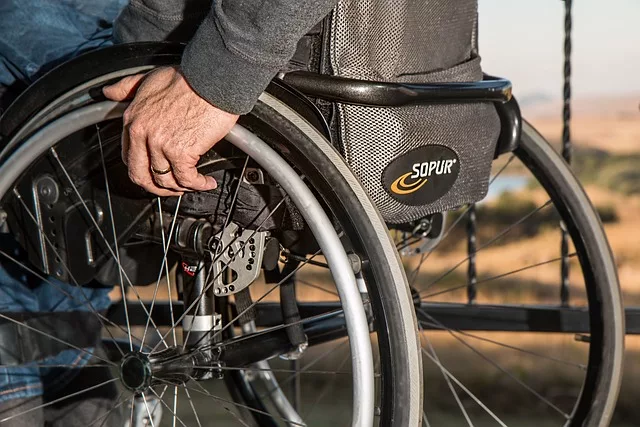Importance of Transportation for Hospital Systems

Transportation is necessary for promoting and maintaining health as well as preventing and managing disease. Living without reliable healthcare providers when you need it can have a significant impact on an individual’s quality of life, their health, and their safety.
In a recent report from UC Davis Health Study finds that current social risks screening does not capture patients’ transportation needs accurately. However, even the current screenings suggest about 5.8 million Americans miss or delay medical care annually because of transportation barriers. The relationship between transportation and health shows that transportation is a single significant barrier to an individual’s health care access. Challenges of transportation are especially acute for individuals with low socioeconomic status, which is a key reason the American Medical Association considers access to transportation to be a vital social determinant of health.
The state of overall care that an individual receives where they live, learn, work, and grow old contributes to their healthiness more than any other factor. Although medical care receives the bulk of healthcare funding and legislative recognition, studies have consistently shown its minor relative results on health when weighed against those of social determinants. Policymakers are starting to recognize the significance of social determinants, for example access to transportation and incorporating solutions into public policy.
This indicates a shift from the traditional medicalized approach the United States has taken to solve its health care problems. Such an approach offers preventative ways to reduce medical costs for individuals, insurers, and the government while improving outcomes. Because of these benefits and more, it is worth further consideration and creative implementation.
Transportation Contributes to Individual and Societal Health Challenges
Transportation is a major economic and social element that transforms people’s daily lives and thus is considered a significant Social Determinant of Health (SDH). The World Health Organization interprets SDH as the conditions in which people are born, grow, work, live and age, and the wider set of forces and systems shaping the conditions of daily life. A myriad of studies suggests that SDH accounts for between 30-55% of health outcomes.

Health and well-being have always been inextricably associated with the social and economic conditions in which people live. Research has shown that only 20 percent of health can be credited to medical care, while social and economic factors such as access to healthy food, housing status, educational attainment, and access to transportation account for 40 percent.
Individuals suffering from food insecurity, housing instability, limited access to transportation or other necessity barriers often struggle with poor health outcomes, increased health care inefficiencies, and increased health care costs. Addressing these determinants of health, commonly referred to as social determinants of health, or simply social determinants, will have a significant positive impact on people’s health, including longer life expectancy, healthier behaviors, and better overall health.
Could Transportation Barriers Can Affect a Person’s Access to Health Care Services?
All too often transportation barriers may result in missed or delayed health care appointments, increased health expenditures and overall poorer health outcomes. Transportation goes hand in hand with other SDH such as poverty, social isolation, access to education and racial discrimination. Transportation can also work in tandem as a vehicle for wellness, no pun intended.
Evolving affordable and appropriate transportation options, walkable communities, bike lanes, bike-share programs and other appropriate transit options can help boost the health of the community. Transportation programs designed for hospitals and health systems supporting accessibility issues include:
- Assessing how transportation can impacts overall community health.
- Integrating support for transportation accessibility into an organization’s mission and practices
- Screening and appraising patients’ transportation needs
- Providing direct transportation support services through community partnerships and programs
- Maintaining policy and infrastructure programs that create safer more accessible transportation resources.
To address transportation issues and help create transportation options for patients, hospitals can implement multiple strategies to increase patients’ access to health care and other services. Hospitals and health systems’ best interests are served when they address transportation services. Individuals experiencing transportation issues are more likely to miss appointments and not fill prescriptions, leading to setbacks in care and likely to disease progression, complications, or readmissions.
Improving transportation improves:
- Health outcomes
- Quality of life
- Cost savings for patients and health systems
Connecting Access to Healthcare Transportation; Health, and Health Equity Growth
There is an opportunity now to support the improvement of health and well-being, including better access to transportation, to help individuals and communities stand up to future challenges. As partners work together towards identifying relevant metrics, alternative ways to evaluate the performance of public transportation, like equitable access in addition to ridership, all collaborators will help to provide a more revealing picture of the US public transportation system.
Due to their reach and authority, hospitals and health systems are well positioned to make a positive impact on the wellbeing of the communities they serve by addressing transportation issues with companies such as SendaRide. Since transportation affects people in diverse ways, strategies addressing these issues need to be varied yet targeted. Multiple strategies must be employed to maximize fixing any transportation gaps.
Inadequate transportation can also escalate social isolation, particularly for older populations and people with disabilities or others who do not drive. This can exacerbate the risk for early mortality, depression, and dementia. Alternatively, easy reach of reliable healthcare transportation can only bolster access to healthier food, vital services, employment, and recreational opportunities, all of which are key factors for health and well-being.
Merit-Based Incentive Payment System
The Merit-Based Incentive Payment System (MIPS) is the default Quality Payment Program contribution pathway for most surgeons. MIPS is a performance-based payment system composed of four categories that provide clinicians the flexibility to choose the activities and measures that are most significant to their practice. An eligible clinician’s performance in each of the four weighted performance categories is combined to create the MIPS Composite Performance Score, also known as the MIPS Final Score, which is used to determine Medicare Part B payment adjustments in future years.
The 4 Performance Categories Included in MIPS
- The Quality category of MIPS replaces the Physician Quality Reporting System (PQRS) and requires eligible clinicians to report data to CMS for quality measures related to patient outcomes, appropriate use of medical resources, patient safety, efficiency, patient experience, and care coordination. The Quality category will make up 60% of an eligible clinician or group’s MIPS Final Score.
- The Advancing Care Information (ACI) category of MIPS replaces the Medicare EHR Incentive Program (Meaningful Use). This category will reflect how well clinicians use EHR technology, with a special focus on objectives related to interoperability and information exchange. The ACI category will comprise 25% of an eligible clinician or group’s MIPS Final Score.
- The Improvement Activities category of MIPS is intended to encourage eligible clinicians to participate in activities that improve clinical practice in areas such as shared decision making, patient safety, coordinating care, and increasing access. The Improvement Activities category will make up 15% of an eligible clinician or group’s MIPS Final Score.
- The Cost category of MIPS (also known as Resource Use) replaces the CMS Value-based Payment Modifier program and evaluates eligible clinicians on measures related to resource utilization, calculated using Medicare claims. CMS has said that this category’s weight will increase in future MIPS performance periods.
Hospital Consumer Assessment of Healthcare Providers and Systems
Healthcare is fully embracing the idea of consumerism, and with that comes the need for consumer and patient satisfaction and dependable ways to measure that experience. Enter HCAHPS, or the Hospital Consumer Assessment of Healthcare Providers and Systems. Conceivably because of its tie to certain value-based care reimbursement models, HCAHPS has become one of the gold standards in patient engagement and satisfaction evaluations in the US hospital industry.
But these scores do not just inform reimbursement rates. Hospitals administering HCAHPS and other providers administering their own specialty specific HCAHPS surveys can use the results to inform quality improvement initiatives internally. Therefore, it is important to understand the definition of patient satisfaction, the history and intent behind HCAHPS scores, and what the future holds for ascertaining patient engagement and satisfaction.
What is Patient Satisfaction?
Patient satisfaction is a demanding assessment for healthcare professionals, considering a stay in the hospital hardly instills memories of an enjoyable time. Nevertheless, patient satisfaction is important as the medical industry continues its pursuit to reimburse providers not for the volume of services rendered but rather for the quality of those services. Patient satisfaction and experience although disparate concepts are necessary parts of that quality equation. According to the Agency for Healthcare Research and Quality (AHRQ), patient satisfaction is about whether a patient’s expectations about a healthcare experience were met.
That is different from patient experience, which encompasses the broad spectrum of interactions that patients have with the healthcare system. Including such things as their management from health plans, care from doctors, nurses, and staff in hospitals, physician practices, and other healthcare facilities. As a fundamental part of healthcare quality, patient experience includes several aspects of healthcare delivery that patients value highly when they seek and receive care, for example, timely appointments, easy access to information, and effective communication with health care providers.
Patient satisfaction plays a role in some value-based care reimbursement models, such as the Inpatient Prospective Payment System (IPPS). Providers get paid for achieving a certain quality threshold, and patient satisfaction is a part of that quality equation. To quantify patient satisfaction and factor it into value-based care, payers and providers need a system for measurement. That is where HCAHPS surveys come in.
What Are the HCAHPS Scores?
HCAHPS scores are the first national standard for patient satisfaction measurement, according to the Centers for Medicare and Medicaid Services (CMS). HCAHPS is a survey tool and data collection methodology for measuring patients’ experiences of their hospital visit. As of September 2022, the survey asks a random sample of discharged patients twenty-nine questions about their hospital experience. The survey comprises questions from specific categories.
- Care and communication from nurses and doctors
- Two questions about the hospital environment
- Experience in the hospital, like communication about medications or help using the bathroom.
- Care after discharge, for example, receiving discharge instructions and communication about care transitions.
- Overall experience and likelihood of recommending the hospital.
- Patient education and communication
- Respondents’ demographic information.
Hospitals may use a CMS-verified vendor for issuing their HCAHPS surveys, or they may institute their own HCAHPS surveying if approved by CMS. Other HCAHPS survey recommendations and requirements include some of the following.
- Issuing the survey across various medication conditions between 48 hours (about 2 days) and up to six weeks after discharge
- Issuing the survey to both Medicare and non-Medicare adults
- Issuing the survey via mail, telephone, mail with telephone follow-up, or interactive voice recognition (IVR) software
- Offering the survey in English, Spanish, Chinese, Russian, Vietnamese, Portuguese, and German
HCAHPS surveys are not individual to hospitals. CMS has developed surveys for specialties across the healthcare continuum, encompassing home healthcare, pediatric hospitals, outpatient, and ambulatory surgery, and even the emergency department. HCAHPS scores are often used for some value-based reimbursement models. However, CMS also uses the score as an accountability measure.
The agency publicly reports the scores on Hospital Compare on a quarterly basis, asserting that it adjusts scores based on some demographic information that may skew results in such a way that is beyond the control of the hospital. Hospitals, and providers filling out specialty specific HCAHPS surveys, can also use scores to improve their own organizations.
Using HCAHPS Scores for Quality Improvement
HCAHPS scores are common tools for healthcare organizations nationwide, with CMS saying around 4,000 hospitals participate in HCAHPS and some three-million patients (about the population of Arkansas) complete the questionnaires5. That is in addition to the internal surveying many healthcare organizations conduct to measure patient satisfaction and experience.
This survey information is a critical tool for informing practice improvement. Using patient satisfaction surveys is integral to its practice development efforts. The aim really is to improve the clinical quality of care and then the service quality of care. And this effort is related to the service quality of care, identifying the voice of the patient, and using that information to recognize opportunities for improvement in providing service to the patients.
Patient satisfaction surveying, be it after-the-fact like HCAHPS or real time, like the system SIP uses, highlights the key pain points for patients. Healthcare organizations should first look at historical timeline trends in their patient satisfaction scores. If the hospital habitually performs poorly in physician care and communication domains, it may be beneficial to offer continuing medical education seminars reviewing patient-provider communication skills.
The surveys may also lead organizations in making better health IT investments. Low scores in care adjustments from hospital to long-term care facility could mark poor health IT interoperability. Consistently scoring low here could indicate that a healthcare organization needs to reconfigure the electronic health records or other supporting health IT systems.
Introducing SendaRide, a non-emergency medical transportation (NEMT) service that offers door-to-door transportation service. We greet riders at their door, or a designated pick-up location, and assist them to the door of their medical appointment or healthcare facility. This service is particularly helpful for patients who have difficulty getting around on their own.

Designed to meet the needs of patients with medical conditions, SendaRide, includes wheelchair vans, walkers, and other forms of mobility difficulties. Prioritizing the safety of passengers including credentialed and vetted drivers, inspected and well-maintained vehicles, and safety features such as the option to add special notes for drivers and audio recordings of the ride, protecting the riders and the drivers.
According to a survey done by a CMS approved HCAHPS vendor, organizations that have better reports of nurse teamwork and communication tend to see better HCAHPS improvements. Patient satisfaction is about making the patient feel safe and cared for during the hospital stay, indicating why nurse communication is of such high value.
How Can HCAHPS Surveys Improve?
Although HCAHPS is a national standard for patient satisfaction measurement, some experts say it is still an imperfect measure. For one thing, non-response bias could lead to survey samples that are not representative of a hospital’s full patient population. Between 2008 and 2017, the HCAHPS response rate dropped from around 33 percent to about 26 percent, a report in 2019 found. As response rates went down, so did patient satisfaction scores.
Typically, if a surveyed sample is representative of the population, an association does not exist between response rate and survey results. The moderate correlations observed suggest that, at a national level, the HCAHPS data being collected does not capture a representative sample of the patient population for these hospitals. Healthcare professionals may overcome this problem by mailing or telephoning more people to complete the HCAHPS surveys, but that’s only part of the issue. The researchers suggested that new survey modalities, like emailing the surveys, could make for a more representative respondent pool.
But even if a hospital has a perfectly representative sample, the actual content of the survey might not actually reflect clinical quality. HCAHPS is an old survey developed years before value-based care and patient-centered care could truly take hold in the medical industry. Although it has seen some improvement, experts asserted in 2019 that the survey needs a complete overhaul. Great hospital care needs to be patient centered. Providing the best care, meeting patient expectations, and keeping them comfortable and well informed is key.
Updating and improving the HCAHPS survey could have a major impact on enhancing care. Important topics that the HCAHPS survey already review includes.
- Care transitions and discharge
- Level of provider teamwork
- Fulfillment and understanding of the patient care plan
- Open-ended response sections
- Sense of emotional and physician or patient safety
The areas to which patient experience leaders say the survey must expand include.
- Patient experience with billing
- Provider compassion and courtesy
- Food and nutrition
- Ancillary labs and tests
- Quality and safety
- Patient intake or registration process
- Family or caregiver support and engagement
- Traffic and parking around the facility
The group also noted HCAHPS should consider social determinants of health and health equity. Separate studies have indicated that HCAHPS surveys need to be mindful of the end-user. In pediatrics, for example, HCAHPS surveys are completed by parents or guardians, not the child who is experiencing healthcare. There is some validity to that approach as young kids are not always able to remember the trivial details from a hospital encounter. But according to a 2020 literature review about pediatric HCAHPS surveys and child-facing surveys, kids can reliably handle some questions.
These satisfaction questions should focus on what is important to a child, not an adult, the researchers advised. The researchers said questions about how well clinicians ameliorated fears, explained complex ideas, and how well the hospital environment made the child feel comfortable are all relevant to a younger audience.
Measuring patient satisfaction is always going to be a challenging area because satisfaction is subjective. As noted by AHRQ, patient satisfaction is about whether a healthcare experience held up to patient expectations. Since people are different and everyone has different expectations, it will be hard to deliver a perfect encounter every time. As healthcare continues to emphasize healthcare quality, it must continue asking the patient about the healthcare journey. By assessing the patient’s perspective, organizations can make critical corrections that help them to realize clinical quality and an enjoyable experience.
Lowering No-Show Rates
Missed healthcare appointments in the United States are estimated to cost hospitals and clinics $150 billion (about $460 per person in the US) every year, with one out of every five appointments resulting in a no-show. There are multiple reasons for patient no-shows, but recent studies indicate that chief among them is lack of access to reliable transportation.
Providing transportation for low-income patients that reduces no-show rates for doctor visits by just 25% could lower public costs more than $15,000 per month as well as extend a lifeline for critical health care.
Substantial reductions can be achieved by offering subsidized transportation to those patients who are the most financially and physically constrained. Those rides could include arrangements with public transportation, accounts with ride-hailing companies or taxi services, or other accommodations.
What About Patient ‘Throughput’?
Patient flow is the healthcare system’s conveyance of patients through stages of care. Patient movement surrounds medical care itself, physical resources, and internal support and systems. Patent throughput is all encompassing from getting to the hospital, the point of admission, the point of discharge, and safely getting back home. The goal of patient flow is to move patients effectively and efficiently all while preserving quality care and patient happiness. As a critical component of process management, optimizing patient flow is an excellent way for hospitals and healthcare facilities to enhance access to care, patient safety, and health outcomes.
The definition of patient flow focuses on how it works in its ideal state. So often, we see patient flow problems and broken systems. Chronic frustrating delays of care across entire departments, patients ready for discharge but no reliable transportation solution in place to get them home. Every patient’s journey starts and ends with getting to and from care. What happens when one patient is running late causing a bottleneck at the intake system? What happens when one patient has no means of transportation home after a procedure causing a bottleneck in the discharge system?
No show and cancellation rates impact operational costs by increasing the number of preventable occurrences. SendaRide can demonstrate value by reducing no-shows that result in increased overall medical costs to address the non-prevented episode, consequential health-outcomes, patient satisfaction, as well as potential increase in patient care as a result of the non-prevented episode.
When multiple areas of the care continuum are running into delays, patients can become plunged into a standstill. This often results in leaving other patients who come after them waiting for their care. The more patients left waiting means escalating disruption in patient flow and valuable hospital resources, including clinicians, nurses, and beds that are needlessly tied-up. Transportation, as the last step in the patient’s experience, can produce costly delays throughout the entire system, create a need for additional staffing to monitor patients, and affect a patient’s perception of quality.
Conclusions
Transportation is vital for hospital systems and critical as a social determinant of health. SendaRide serves as an extension of hospital and clinical services by providing transportation for patients. Patient no-show rates range from 15% – 35%, depending on specialty. SendaRide’s no-show rate is less than 1% minimizing the amount of lost revenue due to both the inability to perform the service and overstaffing for a service that was not performed (excess payroll costs). Merit Based Incentive Payment System (MIPS), the Hospital Consumer Assessment of Healthcare Providers and Systems (HCAHPS), and the HCAHPS survey are helpful tools when measuring the overall success of transportation for hospital systems. The concept of patient satisfaction, the history and intent behind HCAHPS scores, and what the future has in store for measuring patient engagement and satisfaction will be heavily influenced by continuing to improve patient transportation needs.
Transporation within the healthcare system is about the people and their communities. Hospitals and doctors are driven to serve patients, and SendaRide is breaking transportation barriers to allow accessible health care for all. Health systems with the greatest need for medical transportation needs include the aging population, Medicaid patients, those living in rural areas, and Americans whose native language is not English. Dependable, safe, and reliable transportation means every vehicle for every ride for every patient. Optimizing patient flow is a never-ending challenge, but incremental innovations prove to make big impacts every day.
__________
For more information about SendaRide, contact us today!
Tags In
Recent Articles
- Dialysis Treatment and Transportation August 8, 2023
- Importance of Transportation for Hospital Systems April 17, 2023
- Background of PACE; why transportation is vital for PACE programs April 3, 2023
- Cancer Survivor Gives Back March 30, 2023















![Rachel Kern[8115] Rachel Kern[8115]](https://www.sendaride.com/wp-content/uploads/2019/06/Rachel-Kern8115-214x214.png)


























